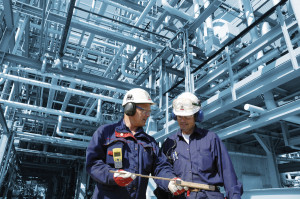When considering the industries that can have an adverse affect on the environment, it’s easy to fall into the trap of just laying the blame at the feet of the more visible culprits —chemical plants, power stations etc—and overlook the fact that every business generates its own carbon footprint, and impacts the environment in less obvious ways. Conducting an energy audit is a proactive way of dealing with this problem and can have other cumulative, positive effects beyond appeasing your conscience. Li Hong and Leon Wang from Bureau Veritas Construction Business Line detail why energy audit is the responsible thing to do, and how it can benefit your business.
 The term energy audit applies to a broad spectrum of energy studies encompassing a quick walk-through of a facility, identification of major problem areas and a comprehensive analysis of the implications of alternative energy efficiency measures sufficient to satisfy the financial criteria of sophisticated investors. Auditing is required to identify the most efficient and cost-effective energy conservation opportunities (ECOs) or measures (ECMs). ECOs (or measures) consist of more efficient use, or partial or complete replacement, of an existing installation.
The term energy audit applies to a broad spectrum of energy studies encompassing a quick walk-through of a facility, identification of major problem areas and a comprehensive analysis of the implications of alternative energy efficiency measures sufficient to satisfy the financial criteria of sophisticated investors. Auditing is required to identify the most efficient and cost-effective energy conservation opportunities (ECOs) or measures (ECMs). ECOs (or measures) consist of more efficient use, or partial or complete replacement, of an existing installation.
To ensure that a proposed audit meets specific needs you should spell out your requirements in a detailed scope of work. This will also assure the building owner of receiving competitive and comparable proposals.
The American Society of Heating, Refrigerating and Air-Conditioning Engineers (ASHRAE) identify four levels of analysis:
- Level 0 – Benchmarking: This first analysis consists of a preliminary whole building energy use (WBEU) analysis based on an analysis of the historic utility use, costs, and on the comparison of the performances of the buildings to those of similar buildings. This benchmarking of the studied installation allows determining if further analysis is required;
- Level I – Walk-through audit: Preliminary analysis made to assess building energy efficiency to identify not only simple and low-cost improvements but also a list of energy conservation measures (ECMs or ECOs) and to orient future detailed auditing. This inspection is based on visual verifications, study of installed equipment and operating data, and detailed analysis of recorded energy consumption collected during the benchmarking phase;
- Level II – Detailed/General energy audit: Based on the results of the pre-audit, this type of energy audit consists of an energy use survey in order to provide a comprehensive analysis of the studied installation, a more detailed analysis of the facility, a breakdown of the energy use, and a first quantitative evaluation of the ECOs/ECMs selected to correct the defects or improve the existing installation. This level of analysis can involve advanced on-site measurements and sophisticated computer-based simulation tools to precisely evaluate the selected energy retrofits;
- Level III – Investment-Grade audit: Detailed analysis of capital-intensive modifications focussing on potentially expensive ECOs requiring rigorous engineering study.
As of today, most of us are interested in energy savings but some do not have a clear plan for achieving higher energy efficiency. Consider the following:
- Are you aware of all beneficial efficiency measures applicable to your facility or just a few?
- Are you able to prioritise your measures based on their financial benefits, e.g. replacing lighting or upgrading refrigerators?
- If necessary, do you have a solid reason for why you chose one measure over another?
- Are your decisions being fuelled by unbiased, good quality facts or parties interested in selling their product?
Financial analysis example of Energy Conservation Measures
Good quality energy audits will help you address the above and more. Performing a quality energy audit can:
- Evaluate your facility as a whole; their goal is not to evaluate single measures but to consider a wide range of available alternatives;
- Provide you with financial analysis. This will enable prioritisation based on financial benefit and return on investment;
- Provide you with solid, easy to understand technical information regarding the proposed energy conservation measures;
- Analyse your historical energy use and find potential issues using statistical methods;
- Provide you with emissions analysis to help you understand the benefits of your decisions from an environmental standpoint;
- Help you understand where energy is used and which areas are worth focusing on the most (energy hogs);
- Provide you with benchmark information to help you understand your energy use performance compared to others in your field and area.
The cost-benefit analysis of the audit report helps decision makers prioritise opportunities and evaluate them as investments. These indicators include rate of return, net present value, cash flow analysis, and payback.
An energy audit is a part of a green building-related service. Green building services help buildings save energy, use less water, generate less waste and provide higher levels of indoor quality and comfort.
Created in 1828, Bureau Veritas is a global leader in Testing, Inspection and Certification (TIC). Present in 140 countries with 1,300 offices and laboratories and 60,000 employees, Bureau Veritas is recognised and accredited by major national and international organisations. In China, they have 9,000 employees in 100 offices and laboratories. For more information go to: www.bureauveritas.com



Recent Comments